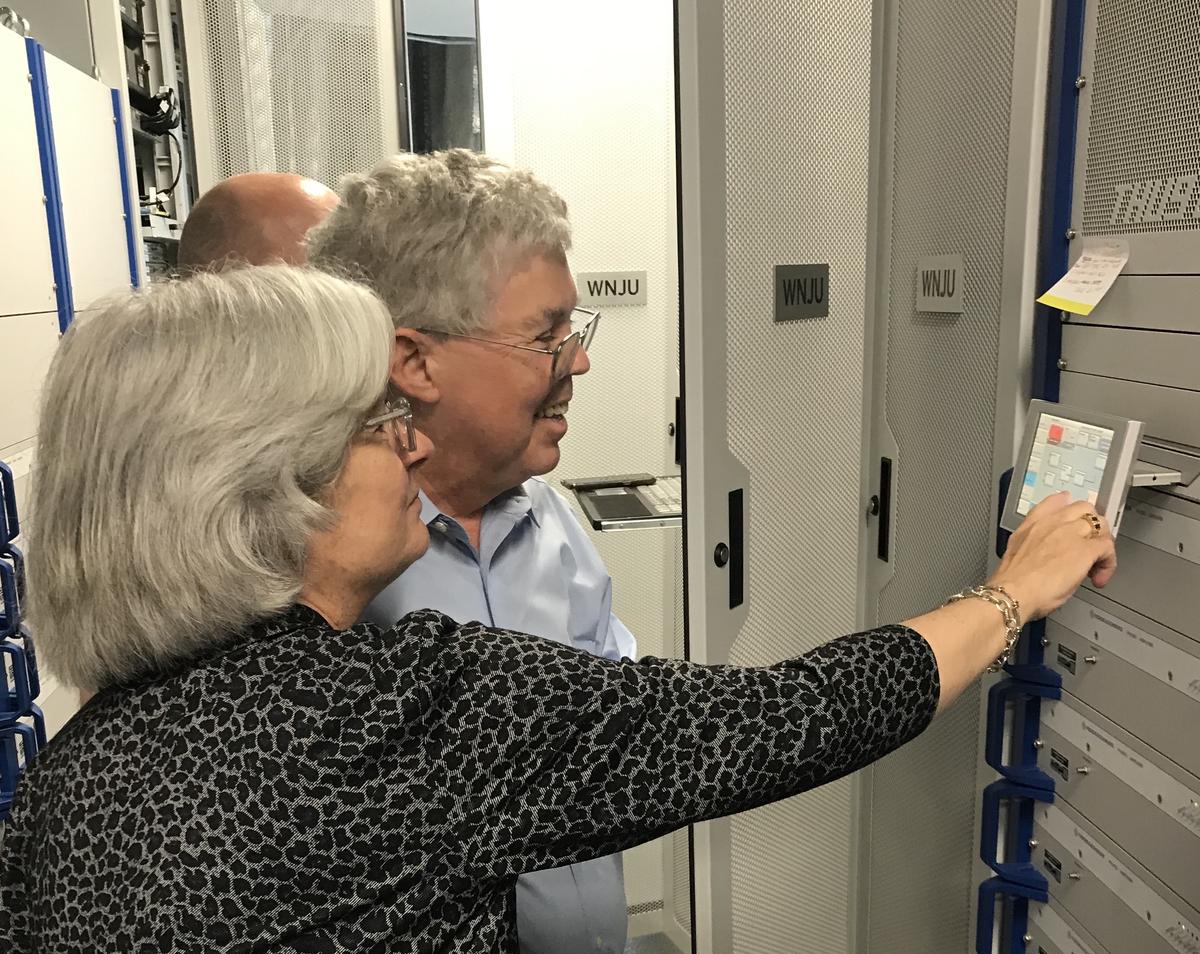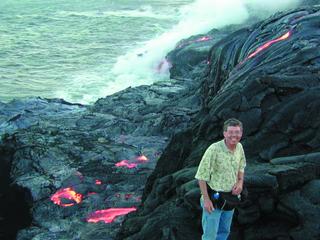300 Columns: Doug Lung Examines the Evolution of OTA Broadcast TV Over the Last 31 Years
The audience, and as a result, the content, of my columns has changed over the past three decades

I started writing RF Technology columns for TV Technology (now TV Tech) 31 years ago and this article represents my 300th column. In the 1980s, before starting my column I did some reviews on equipment such as a Leitch VITS inserter and the Abekas A42 still store. Given the timing, these may have appeared in Radio World magazine, before TV Technology became a publication.
Those were done on a typewriter, and I have no archive files. My report on building a Townsend CST transmitter from a kit of parts, delivered just as Townsend entered bankruptcy, was likely what prompted the editors of TV Technology to suggest I start a monthly column on RF technology back in 1991.
I took a look at my 200th column (actually my 201st column since one earlier column was so long the editors had me split it into two columns) to see what I was thinking about then. I noted the decreasing number of viewers using antennas and the demand for spectrum for wireless carriers. I wrote: “I believe the future of over-the-air TV broadcasting will be determined soon, probably within the next two years.”
What's Changed?
The good news is over-the-air TV broadcasting is still going strong 12 years later, in part helped by money broadcasters received as part of a spectrum auction that resulted in the transfer of 14 UHF-TV channels to wireless carriers and by viewers dropping cable TV. Those funds helped broadcasters upgrade their transmitters and antennas and prepare for the transition to the next-generation digital standard, ATSC 3.0.
Although I acknowledged then that solid- state transmitters were becoming viable options for UHF-TV transmitters up to 10 kW, I never imagined that only five years later I’d be ordering a 108-kW solid state Rohde and Schwarz transmitter for installation at One World Trade Center.
The use of Doherty amplifiers allowed solid- state amplifiers to exceed the efficiency of the IOT (inductive output tube) amplifiers and approach or exceed the system efficiency of MSDC (multi-stage depressed collector) IOT amplifiers. The move from tube-based transmitters and the transition from analog signal generation to signals created in the digital domain in FPGA’s and software-defined transmitters was perhaps the most significant technology change since I started writing for TV Technology.
The Future of Over the Air TV
Twelve years ago, I wondered about the future of over-the-air TV. Based on the number of questions I receive about over-the-air TV reception and the growing number of sales and ads for TV antennas, I see a good future for over-the-air TV.
That isn’t to say there aren’t risks. Viewers are dropping their cable TV subscriptions in favor of streaming video over the internet. Since local TV stations are not available for free online, this leads viewers to install antennas if they value local TV. If TV station owners decide to allow free streaming of their over-the-air programming, this could slow the adoption of antennas.
Based on the number of questions I receive about over-the-air TV reception and the growing number of sales and ads for TV antennas, I see a good future for over-the-air TV."
At some point, the number of viewers could drop to the point where maintaining a strong over-the-air signal or even dealing with the responsibilities the FCC places on TV licensees might not make sense if most of the audience was watching via the internet.

One thing broadcasters can do to preserve over-the-air broadcasting is to make it easy to receive. The move from analog to digital helped as most viewers now get a perfect picture and a huge number of programs, often with something as simple as a $20 indoor antenna.
The transition to ATSC 3.0, with its more robust transmission options (including single frequency networks) should make reception easier. Broadcasting a compatible 5G signal could open access to cellphones and tablets. The ATSC 3.0 standard would allow transmitting a signal in the ATSC 3.0 A/322 format to TV sets along with a 5G physical layer to cell phones and tablets using time domain or frequency domain multiplexing.
Qualcomm is developing chips that will allow reception of 5G broadcasts on UHF-TV spectrum in cellphones. While it may be difficult to convince wireless carriers to allow this in devices they sell, broadcasting is still the most efficient way to deliver content to a huge number of viewers—there may be ways to encourage coverage through sharing ads and viewer data.
I strongly believe the success of ATSC 3.0 will depend on how easy it is to receive on the largest number of devices. If broadcasters make it too difficult for manufacturers to build ATSC 3.0 receivers or require viewers to go through extra steps to receive the signals, it will be tough to make the transition from ATSC 1.0 to ATSC 3.0. It is great to see companies like VBox and SiliconDust offering low-cost ATSC 3.0 receivers that will work with existing TV sets.
I’m still waiting for a low-cost ATSC 3.0 USB dongle and wonder if they will work with open-source software when they do become available. I follow open-source DTV software and device driver development on the linux-media mailing list and there is now little activity for ATSC 1.0 and none related to ATSC 3.0.
One of the challenges broadcasters face with ATSC 3.0 is the need to protect content from unauthorized distribution without hurting adoption of ATSC 3.0. Without this protection, program providers may be reluctant to offer their best content to broadcasters. Managing digital rights will be important. It shouldn’t be too difficult for manufacturers and software developers to have their devices and programs certified. Fortunately, since ATSC 3.0 is IP-based, the same protections viewers have gotten used to when viewing Netflix, Peacock, Hulu, Amazon Prime or other streaming services should work with ATSC 3.0.
If authentication and decryption can be handled in an existing browser or browser plug-in, it should be easy to build and distribute low-cost ATSC 3.0 tuners that work with a qualified browser for displaying content. If broadcasters can match the experience people have with protected streaming content, content protection should not hinder ATSC 3.0 adoption on devices beyond TV sets. Even with content protection, I would expect most content to be available for free with minimal, if any, user registration requirements.
The Future of RF Tech
I’ll be describing developments with ATSC 3.0 and other RF technology topics in future columns.
The audience, and as a result, the content, of my columns has changed over the past thirty years. Past columns described simple, easy-to-build remote controls using off-the-shelf computer modules that when attached to a dial-up modem, allowed a simple way to monitor remote sites, particularly low-power and translator sites. I had tips on doing calormetric RF power measurements, the best way to aim microwave dishes, and tuning external cavity klystrons.
I covered path-loss calculations for microwave systems, RF exposure calculations, and coverage predictions using open-source software. As the ATSC 3.0 standard was being developed, I wrote several articles on how the ATSC 3.0 physical layer works and how it differs from ATSC 1.0.
In recent years I found there is more interest in receiving over-the-air TV, measuring signals, optimizing coverage and practical tips. This is partly due to the simplification of the transmission path. It is no longer necessary to spend hours optimizing a transmitter’s analog exciter and solid-state transmitters don’t require tuning. With regards to tutorials, in the past 299 columns I’ve covered so many topics I have to be careful about repeating myself! Some are available by Googling “Doug Lung” and the topic.
Many of the best ideas come from readers. I welcome your questions, comments and experiences. Let me know what you would like to see in future columns. Which topics have you found most useful? Would you like to see more in-depth technical topics, less technical practical tips, basic tutorials like my last column, or “build-it” projects (both hardware and software)? Email me at
dlung@transmitter.com.
Get the TV Tech Newsletter
The professional video industry's #1 source for news, trends and product and tech information. Sign up below.

Doug Lung is one of America's foremost authorities on broadcast RF technology. As vice president of Broadcast Technology for NBCUniversal Local, H. Douglas Lung leads NBC and Telemundo-owned stations’ RF and transmission affairs, including microwave, radars, satellite uplinks, and FCC technical filings. Beginning his career in 1976 at KSCI in Los Angeles, Lung has nearly 50 years of experience in broadcast television engineering. Beginning in 1985, he led the engineering department for what was to become the Telemundo network and station group, assisting in the design, construction and installation of the company’s broadcast and cable facilities. Other projects include work on the launch of Hawaii’s first UHF TV station, the rollout and testing of the ATSC mobile-handheld standard, and software development related to the incentive auction TV spectrum repack. A longtime columnist for TV Technology, Doug is also a regular contributor to IEEE Broadcast Technology. He is the recipient of the 2023 NAB Television Engineering Award. He also received a Tech Leadership Award from TV Tech publisher Future plc in 2021 and is a member of the IEEE Broadcast Technology Society and the Society of Broadcast Engineers.











